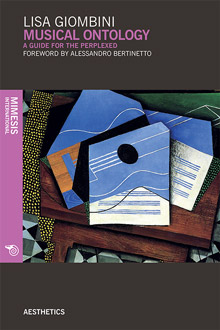EXCERPT FROM THE BOOK ‘MUSICAL ONTOLOGY: A GUIDE FOR THE PERPLEXED’ BY LISA GIOMBINI
What is musical ontology, and why should we as philosophers address it, if ever?
These two (different) questions constitute the Ariadne’s thread running throughout this whole book. They will take us down a path that will lead, issue after issue, from very specific questions on the nature and identity of musical works to the Minotaur of all major philosophical dilemmas: the subject-matter of metaphysics, the relation between ontology and history, the role of intuition as a source of knowledge…and then, as the thread gradually rewinds, back to art and music.
This process, I’m sure you agree, needs to be handled in stages. So, before tackling these two questions directly, I suggest we go about it in a roundabout way. Let’s start with a game. Don’t worry, it’s not complicated. You just need some concentration and the Internet. The rest will come to you through the music.
I assume that everybody in the Western world (and in the Eastern too, arguably) is familiar with the famous song My Favorite Things from the 1959 Rodgers and Hammerstein musical The Sound of Music, and Julie Andrews’ famous rendition of it in the 1965 cult movie. The lyrics make reference to the sort of things the main female character in the film, Maria, loves the most; kitschy stuff like ‘cream colored ponies and crisp apple strudels’, ‘doorbells and sleigh bells and schnitzel with noodles’, ‘wild geese that fly with the moon on their wings’. The idea is that when things going badly, Maria can fill her mind with these selected things and feel better.
So all you are asked to do for the moment is think about this song.
(1) Just imagine it in your mind for a few instants. Done?
(2) Try to hum it. Begin silently, then sing it softly. You probably don’t remember all the words, so just hum the melody.
(3) Now, please look for the video of My Favorite Things on YouTube. Be careful to search for the original American soundtrack. Here is a link: https://www.youtube.com/watch?v=33o32C0ogVM
Listen to it.
As you probably know, My Favorite Things became a jazz classic in the early Sixties, thanks to John Coltrane’s famous saxophone interpretation of it. It almost became his signature piece. He varied and modified it and improvised on it, and the nearly 45 versions he executed are as different from each other as they are from the original piece by Rodgers and Hammerstein2.
(4) Choose a video of one of Coltrane’s versions online. You can find one from his 1961 album by the same name on the following link: https://www.youtube.com/watch?v=iQsvMf8X0FY
(5) Now take a look at the original score of the song (the first page is here as an example, but the complete score is easily available online).
(6) Then cast a glance over Coltrane’s saxophone version:
Even those of you who are unable to read music will notice that the three scores are different. Significantly, the only thing that remains true to the original is the title, My Favorite Things. If you could play the three on the appropriate instrument, however, you would notice that this impression is somewhat misleading: in the end, you would still be playing the very same song. So the question arises: what is this song? And this brings us to the heart of the matter.
Consider this fact. The things you have just been requested to do (thinking about a tune, humming it, listening to one version, then another, reading the original score and other arrangements) all have to do with an ‘object’ we call My Favorite Things. Notice that I made reference to it as a song, though whether it’s a tune, a melody, a standard jazz piece, a work or all those things together still needs to be determined.
However, what you did in following the instructions had very different results. You’d probably say that something very different was happening during steps (2) and (3), and though you may be reluctant to compare your humming to Coltrane’s mellow saxophone, you have to admit that something similar to My Favorite Things was coming out (unless, of course, you’re totally tone deaf, but that’ll be a whole other story).
When you thought about the song, when you tried to sing it, when you finally listened to it and read the score, you focused your e orts on an entity you recognize as having features so distinctive and particular that you are forced to exclaim, when prompted: ah yes, that one! So the issue is to try to understand what the that is which remains the same in all these different versions, in spite of how o -key we may be, moving from one score to another, from one performer to another, taking on different shades, tonality and sonority, and all this without losing its identity.
Things get really puzzling now, but we can console ourselves: this puzzlement is but the prompting and starting point of musical ontology. No surprise then if the question of My Favorite Things seems so strange, since there is an inherent paradox in the whole domain of music, which is what makes investigating it so appealing to those interested in ontology.

